Shopping ad spend continues to grow Y/Y in fact, about 60% of all Google clicks are coming from shopping. Google sees this as a highly effective way to connect businesses with consumers, so much that shopping ad impressions were also up 40% year over year. Check out this article from search engine land which analyzed Merkle clients in 2018.
With so much success riding on whether or not you are showing up in Google Shopping, we outlined below some of the most common reasons why your products may not be showing up on Google when you need it the most. When troubleshooting why your ads are not showing up we want to take a look at the following 3 areas for the most common mistakes
- Product Feed
- Merchant Center
- Google Ads
Product Feed Common Mistakes
- Your Product Title Needs Improvement
A good product title should be about 70 characters or less, concise and should include fundamental elements of the product. Google will show your ads to search terms related to your product title. Avoid using unnecessary adjectives or descriptive words. The optimal format is: Brand – Title – Dimensions. For example, “Cool New Nike Jordans Basketball Shoes” should be “Nike Jordans Men’s Size 10 Basketball Shoes”
- Your Product Descriptions Are Not Matching Up with Search Terms
Like your product title, your product description might not be targeting the right KWs. While you can submit up to 5,000 characters, it is best practice to keep your descriptions somewhere around 500. In order to ensure that you are showing your ads to the right customers, make sure you are including relevant product information. Always have important search terms incorporated naturally into your descriptions such as attributes, features, colors, size, design, etc.
A good description will help Google associate your products with the proper keywords your intended customers are using. On top of that it will provide reassurance to customers that they have found what they are looking for.
Below is a good example of a product image, title and description that shows for a highly competitive search term like “frying pan”

- My Google Shopping Product Image is Getting Disapproved
Unlike text ads, Google shopping ads always at the top of the SERP. As a result, this visual browsing or buying experience begins with proper images. Check out these 7 steps to optimize your product images.
Here are the most common image disapprovals you might find in your Merchant Account.
- Promotional overlay on image – This is a relatively simple fix. Search your feed and product images that contain Logos, CTAs or watermarks. You will need to upload a new image.
- Image too small – Use an image that is at least 100×100 pixels for non-apparel products and 250×250 pixels for apparel products
- Image not retrieved [crawl rate too slow] – There is no easy way to “increase the crawl rate” despite what Google’s warnings may say. Find out how to increase crawl rate in Google Search Console by adding alt tags to images, including sitemaps to help Google crawl your site more easily, or reducing the size of the images on your web pages.
- Processing failed [image link] – Try reprocessing your feed so Google can crawl the image link again. If this fails, try updating or changing your image link in your feed.
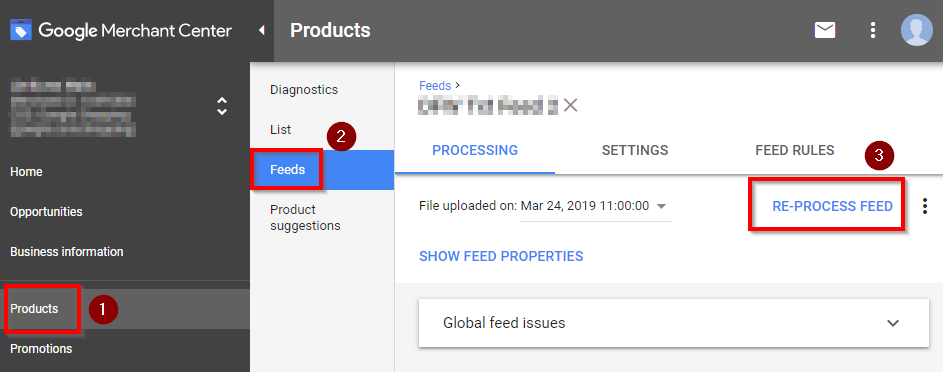
- The Minimum Fields Required for A Product Feed
Here are all the values available in the Google product feed. Below is a list of the absolute must have values with NO EXCEPTIONS
- Landing Page
- Availability
- Price
- Brand
- GTIN – UPC (in North America / GTIN-12): 12-digit number (convert 8-digit UPC-E codes to 12-digit codes)
- MPN – If GTIN does not exist use “identifier_exists” with the value “no”. Also leave MPN blank, since the product doesn’t have an MPN)
- Shipping
Merchant Center Common Mistakes and Issues
The two most common problems in the merchant center that prevents product listing ads from showing are when taxes and shipping settings are not set up properly. Below is the basic set up for taxes in your Google Merchant account
- Setting Up Tax Incorrectly
When you click on Tax in the page menu, there are 3 options:
- Don’t configure tax at the account level. Select this if you charge taxes in the United States but set up tax only through the tax attribute.
- Configure no nexus for all states. Select this if you don’t charge taxes in the United States.
- MOST OFTEN YOU WILL CHOOSE Configure tax and set up nexus. Select this if you do charge taxes in the United States.
If you are setting up the location where you collect tax, click the blue “+” button to Add State
- The most common settings for Tax Rate is “Destination-based” meaning Google will calculate based on the location of the user and Tax on shopping and checking off Tax on shipping.
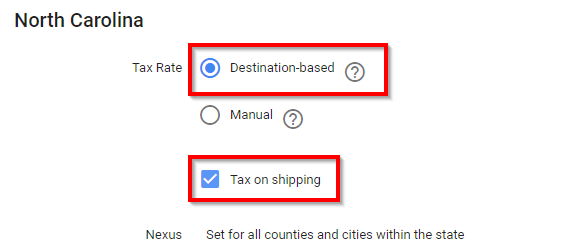
- Shipping Settings in Merchant Center
For Shipping, the setup is simple but may require some customization. Work with your accounting team to make sure you are following all shipping and tax rules that apply to your business. You may offer different shipping methods or flat rates on certain items. Below is an example of a common set up for shipping in Google Merchant Center. Click the blue “+” symbol to set up your shipping.
- Name your shipping service – You can label this as the carrier name such as USPS or UPS to name a few.
- Select transit time in business days
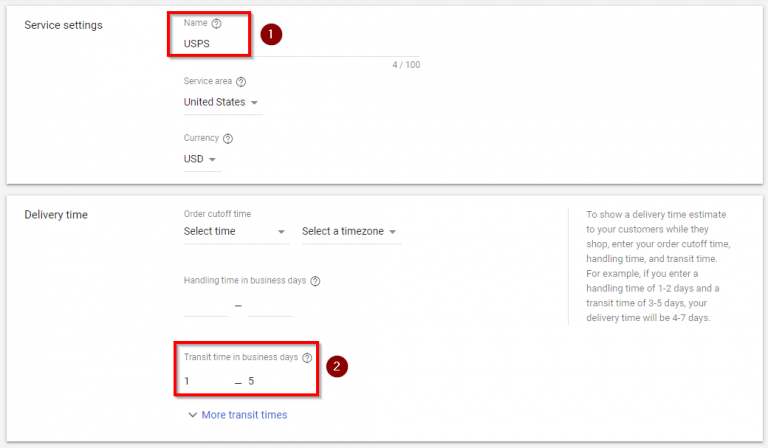
- At the very bottom of this screen click the blue “+” symbol under shipping rates
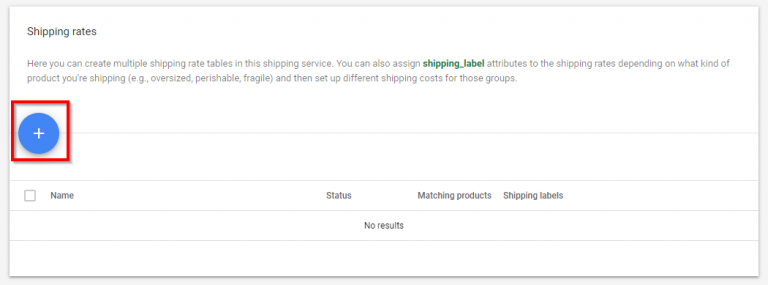
- The most common settings are all products, Shipping rate name (keep simple) All Products and Configure by order weight.
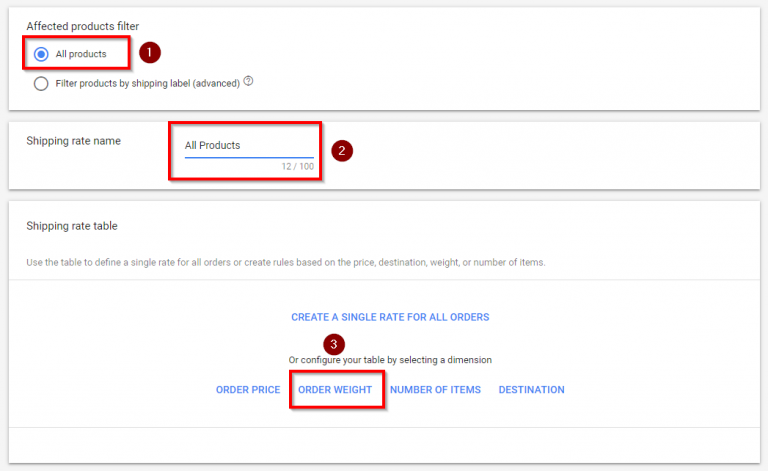
- The last step is changing the fixed rate to a carrier cost. After you have chosen this, click on select which will appear to the right of “Carrier rate” and choose New Carrier Rate
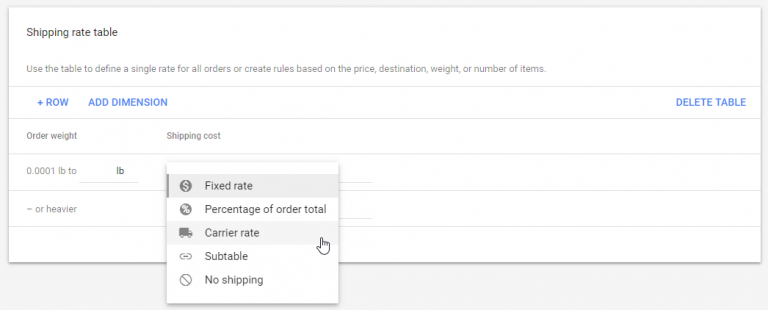
- You can now select the type of service you use when shipping products out to customers. In the screen shot below, we chose USPS Retail Ground. Make sure you add your origin zip code
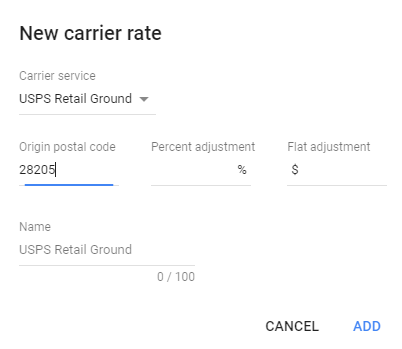
Common Mistakes in Google Ads
- Don’t Forget to Check Campaign Settings and Targeting
Many campaign settings and targeting get overlooked when it comes to Google shopping troubleshooting. It is not uncommon to forget what bid modifications have been made to a campaign. Check the following settings for your shopping campaigns to make sure you are not limiting traffic.
- Device – Are any set to -100%?
- Ad Schedule – Are the bids set too low?
- Location – Are you targeting big enough locations?
- Audience
- If you are targeting audiences, are they big enough. Are they over 1,000?
- If you are observing audiences, are your bid adjustments too high/low?
- Priority Level – if you have multiple shopping campaigns and you have set the priority levels to either high, medium, or low in the campaign settings, make sure the product ads are not in a low priority campaign.
- Make sure your products are being targeted by an ad group.
- Budgets and Bids Aren’t High Enough
- You might be running out of budget. Check to see if you have set a high enough budget for your campaigns.
- Are you bids high enough for the auction?
- By now you should be familiar with smart shopping. If you are using this type of smart campaign and have a target CPA or target ROAs bidding option set, make sure that the threshold is set high enough. For example, in a shopping account that typically has an ROAS of $4 for shopping the target ROAS should be set to less than or equal to $4 (not above). Smart shopping tends to outperform its target bidding goals.
- Negative Keywords Blocking Traffic
Negative keywords vital to an account’s success. They can minimize wasted spend by preventing your ads from showing for the wrong search queries. They can also prevent you from showing for search queries that are important to your business as well.
- If your shopping ads are not showing up start off by auditing all negative keyword lists associated with your campaign. Remember negative KWs can exist on the ad group, campaign and account level. These lists can be specific to that ad group or campaign or with shared negative lists and apply to multiple campaigns. Make sure you didn’t accidentally add a negative keyword contains to your search terms or overlaps your search terms.


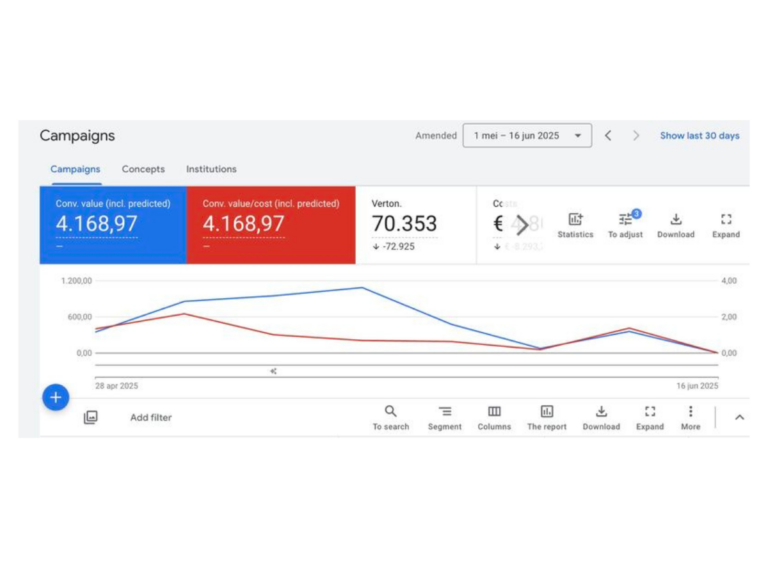

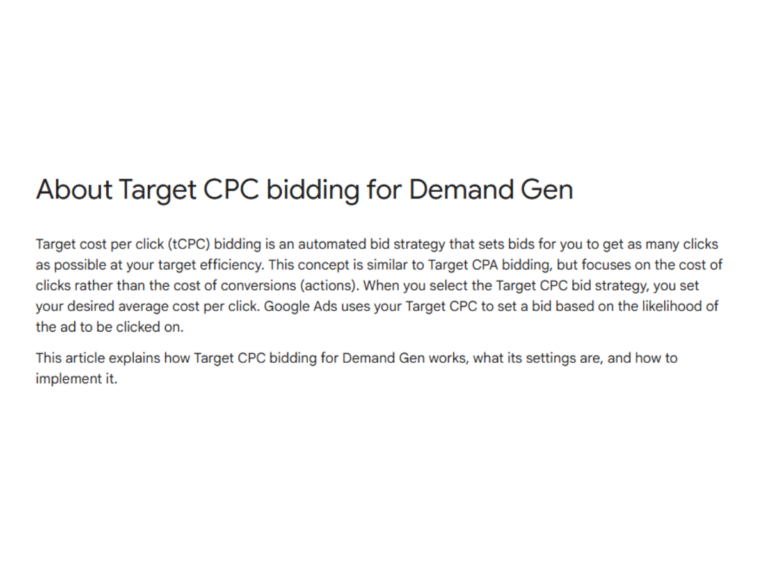
no replies